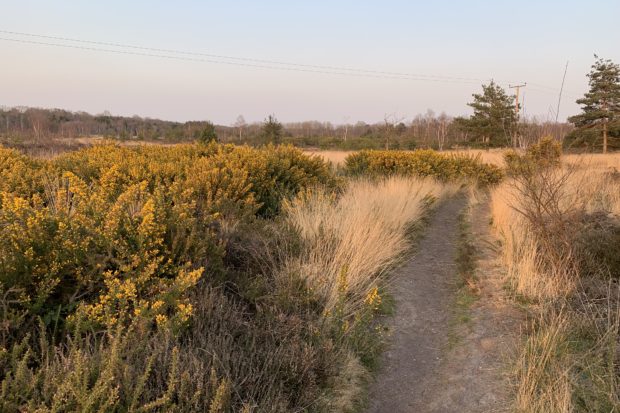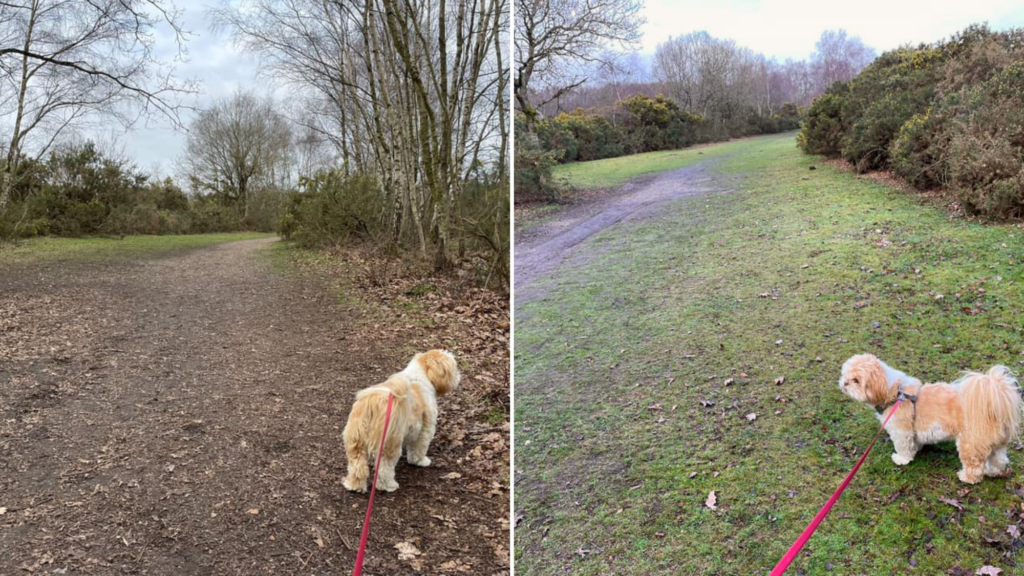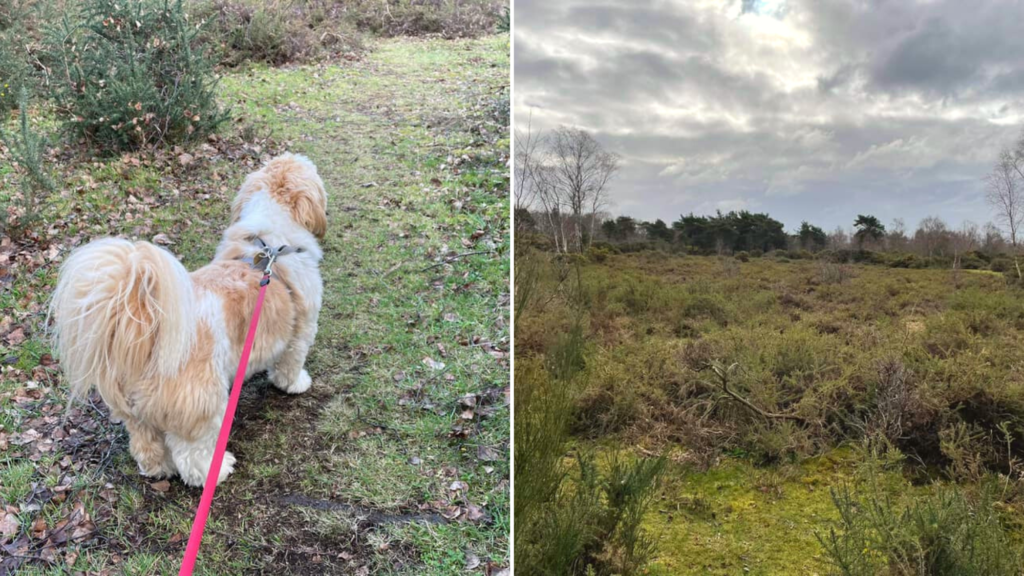What counts as a main path?

Today I thought I’d look a little closer at what ground-nesting bird habitat looks like, with the help of my able assistant, Henry!
Sometimes there’s confusion about what a main path looks like, or the type of habitat that birds use for nesting. Main paths are obvious paths and tracks, usually part of the public rights of way network. Smaller paths, also known as ‘desire lines’, are generally made by people taking shortcuts, often cutting through optimal nesting habitat. The photos below show two main paths and a smaller path that leads to an expanse of open grass and heather where Nightjar nest. If in doubt, many of our heaths have areas of woodland that are great for sniffing, exploring and ‘zoomies’, stick to these and you can’t go wrong!
Why are ‘open’ habitats favoured? Woodlark feed on the ground and walk from the nest to forage for themselves and their offspring. They prefer open heath for this, especially recently cleared areas. And Nightjar are beautifully adapted to this habitat too. Their camouflage patternation allows them to ‘disappear’ into the vegetation, their main defence mechanism.
Please help us spread the word…keep to main paths from March to September to protect these sensitive birds.
Thank you everyone 🙏
Nicky
Thames Basin Heaths Partnership

#PawsOnPathsPlease


